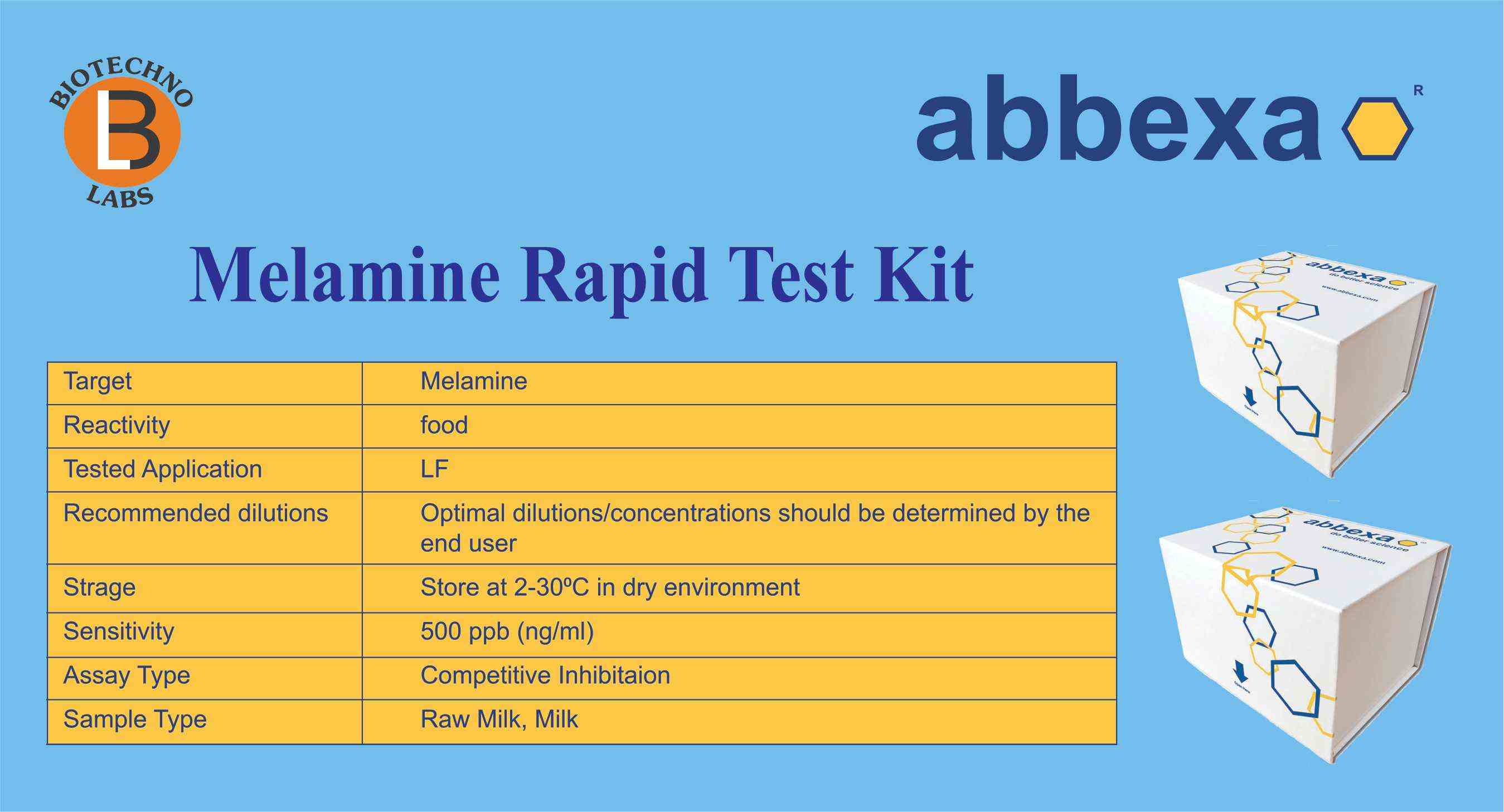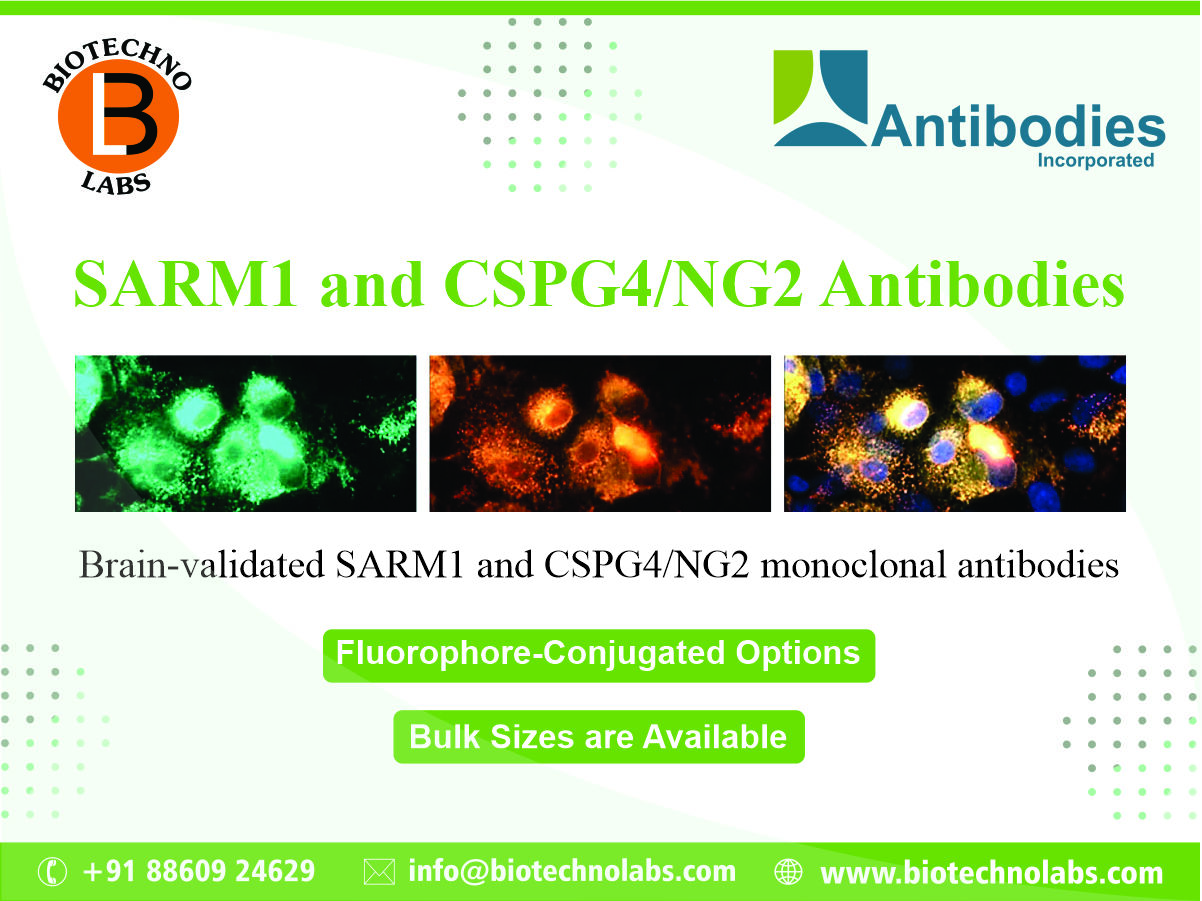
Rapid Melamine Detection Kit
Melamine (2,4,6-triamino-1,3,5-triazine) is a nitrogenous heterocyclic molecule employed as a chemical intermediary in the production of amino resins and plastics. It has a low water solubility and is a white crystalline solid at ambient temperature with a melting point of 350 °C. Melamine hydrolysis via deamination reactions under high alkaline or acidic conditions may result in the formation of by-products such as ammelide (6-amino-2,4-dihydroxy-1,3,5-triazine), cyanuric acid (2,4,6-trihydroxy-1,3,5-triazine), and ammeline (4,6-diamino-2-hydroxy-1,3,5-triazine), which may act as impurities during mel Melamine and its analogues can also combine to form high-molecular-weight complexes.
Melamine has been found to be fraudulently added to several food items and pet foods due to its high nitrogen content (approximately 66%) and inexpensive cost, in order to falsely increase the apparent protein content. In fact, the total nitrogen content of a food is generally determined by the Kjeldahl method (AOAC 2005), a nonspecific method that is not able to distinguish between different sources of nitrogen (protein and non-protein). For this reason, numerous studies have been conducted in an effort to create analytical techniques that can identify and determine the presence of melamine and/or its structural analogues in food, particularly dairy products. Melamine has a low acute toxicity and is rapidly absorbed from the GI tract and excreted from the body in rhesus monkeys and rats, with a half-life of about 4-5 hours.
Melamine has been found to be fraudulently added to several food items and pet foods due to its high nitrogen content (approximately 66%) and inexpensive cost in order to falsely increase the apparent protein content. In fact, the total nitrogen content of a food is generally determined by the Kjeldahl method (AOAC 2005), a nonspecific method that is not able to distinguish between different sources of nitrogen (protein and non-protein). For this reason, numerous studies have been conducted in an effort to create analytical techniques that can identify and determine the presence of melamine and/or its structural analogues in food, particularly dairy products. Melamine has a low acute toxicity and is rapidly absorbed from the GI tract and excreted from the body in rhesus monkeys and rats, with a half-life of about 4-5 hours. The EFSA Panel defined a tolerated daily intake (TDI) for melamine toxicity of 0.2 mg/kg body weight in accordance with World Health Organization guidelines (WHO 2008). Additionally, the Codex Alimentarius Commission's Executive Committee decided that the maximum amount of melamine permitted in powdered infant formula is 1 mg/kg and the maximum amount permitted in other foods and animal feed is 2.5 mg/kg. A limit of 0.15 mg/kg for melamine in liquid infant formula was also agreed upon during the Maastricht summit in 2012. The need to monitor melamine content required the development of analytical techniques with increasingly higher sensitivity as well as rapid and user-friendly methods.
We, BTL Biotechnolab Pvt. Ltd., as a channel partner of Abbexa, offers an advanced Melamine Rapid Test Kit to the scientific community: Rapid Test Kit is based on the gold immuno-chromatography assay (GICA) principle. Melamine in the samples binds to the colloidal gold particle-labeled Melamine antibody. When the concentration of Melamine in the sample is higher than the detection limit, there is no colour change in the detection line, and the result is positive. When the concentration of MEL in the sample solution is less than the detection limit, there is a colour change in the detection line, and the result is negative.
Sample preparation
Milk and raw milk:
- Add milk sample into a clean and dry tube and centrifuge at 4000 RPM for 5 min.
- Detection limit: 500 ppb
- If the sample does not penetrate the C line, dilute the sample with deionized water (sample:deionized water - 1:1).
- Add 4-5 drops into the sample well, detection limit: 1000 ppb
Assay procedure
- Take a test cassette and lay it flat on a clean table.
- Add 4-5 drops (approximately 120 µl) of diluted sample to the sample well on the test cassette.
- Leave at room temperature for 10 For Reference Only -15 min, then analyze the result
For more details, please follow the below link:
https://biotechnolabs.com/
https://biotechnolabs.com/products
https://www.abbexa.com/melamine-rapid-test-kit
For product details, please connect with us at info@biotechnolabs.com.








